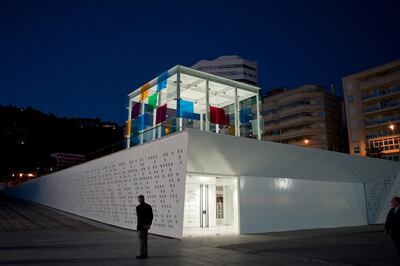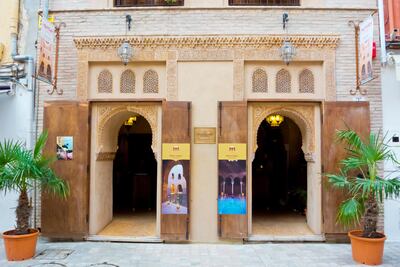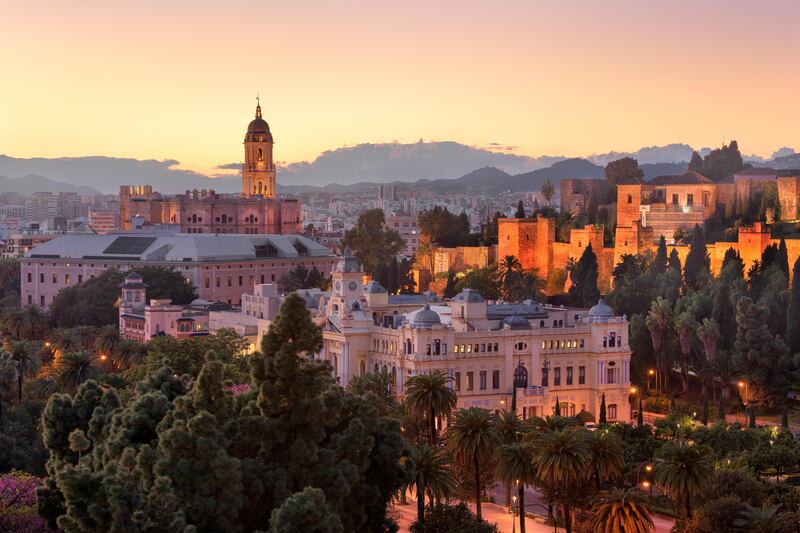Why Malaga?
As the airport hub for the Costa del Sol, 16.6 million passengers passed through Malaga airport in 2016, the vast majority of them heading directly to the sandy beach resorts along the coast, and entirely missing the city itself. It's their loss; Malaga is a vibrant, characterful port city with excellent seafood and a rich history, with some of the finest architectural reminders that what is now Spanish Andalusia was for many centuries Moorish Al-Andalus. Even after the Christian reconquest of the peninsula, many of the fountains, mosaics, gardens and beautifully decorated courtyards remain: indeed many of the Moorish architects themselves stayed behind, resulting in a distinctive Christian-Muslim hybrid style known as Mudéjar.
There's a tolerable if small city beach here too, if that's your thing, but what has truly elevated Malaga as a destination in the last few years is its huge investment in solidifying the city's reputation as a capital of art and culture.
In 2015 the first Pompidou Gallery space outside of France was opened here, as a temporary five-year enterprise, and it feels as modern and fun as the one in Paris, albeit on a less imposing scale. Malaga City Hall are paying the Pompidou €1m (Dh4.3m) a year for the rights to the name, and to borrow their Chagalls and Kahlos.
There is also a new Carmen Thyssen art museum, which features Spanish painting (it is related to the famous Thyssen gallery in Madrid), a new outpost of the St Petersburg State Museum, and – more long-standing – the Contemporary Art Museum and the Picasso Museum, which features almost 300 of the city's native son's works, situated in a grandiose 16th century palace. The city has reportedly spent €100m investing in art in the last decade, and it shows.

A comfortable bed
The luxury choice is the dramatically-appointed Gran Hotel Miramar, an opulent and historic beachfront hotel opened in 1926 and recently restored to its former glory – after an eventful 20th century in which it received numerous celebrities and royals, and was at various points a field hospital during the Spanish Civil War and the city's courthouse. The numerous bars, restaurants, spas and pools are worthy its recent €65m renovation. Rooms start at €236 per night.
Petit Palace Plaza Malaga is a cheaper, fashionable option: a well-liked modern boutique hotel in the city centre, with bold orange and white décor and reproduction Arne Jacobsen chairs, a good breakfast buffet and free bike hire, for anyone wanting to explore the city – or just a ride down the palm-lined promenade – on two wheels. Doubles from €89 (Dh390).
Find your feet
Best to start from the top, literally, and either walk, if you're feeling especially fit, or take a taxi or bus up to the 10th century Gibralforo castle overlooking the city.
For a nominal entrance fee, you're treated to spectacular views down over Malaga's old town, the beach-front, the bullring, the port and out to the hills beyond the city limits.
At the foot of the same hill is the Alcazaba, the imposing palace built by the Hammudids in the 11th century, based on earlier Roman and Phoenician forts. It is less globally renowned than its younger sibling, the Alhambra in Granada, but is still a hugely impressive network of marble towers, courtyards and dwellings, and much less hassle to visit.
From there, it's another short walk to the coast, and the relaxed sea-front promenade that forms the centrepiece of Malaga's recent rejuvenation.
Meet the locals
Even with a population of more than half a million, Malaga is a compact city, with a charming, pedestrianised old town that is home to a lot of its nightlife, as well as its historic monuments, museums and hotels.
The happy result is you're as likely to find local flavour – and maybe an impromptu flamenco performance – in the city-centre bars and restaurants as out in the suburban neighbourhoods.
Bodega Bar El Pimpi is a famous, sprawling bar and restaurant in the city centre, and absolutely worth a visit for the bustling ambience and eye-catching traditional décor: gigantic barrels signed by a stream of celebrity visitors line the maze of interior rooms, while the outdoor terrace is perfect for people watching.
Book a table
While the local speciality in the tourist hotspots is epically large platters of pescado frito (a selection of fried white fish and shellfish), the monotony of fried batter and lemon can get a bit wearing after the first kilo or two. Better to reserve a spot at the much more refined (though still inexpensive) El Meson de Cervantes, where the fruits of the Mediterranean really sing: melt-in-the-mouth octopus, delicate anchovies and hunky tuna and hake, beautifully presented in cosy traditional surroundings.
Southern Spain is the home of tapas (centuries ago, small plates were placed over the top of your drink to keep flies off – 'tapar' is the verb 'to cover'), and La Tranca is the quintessential convivial tapas restaurant, authentic but not kitsch. Classic Spanish pop plays on the radio, the staff often sing along, and your order is literally chalked up on the bar or your table, as you go along - with tapas, you can play it by ear, rather than order everything in one go. Meatballs, langoustine and the 'tostadas' with goats cheese and caramelised onion are a must (Spanish meatballs are always beef).
Shopper's paradise
For an array of culinary delights to compete with the food markets in Barcelona and Madrid, head to Malaga's Mercado Atarazanas. The substantial indoor structure dates back to the 14th Century, although the seasonal produce is somewhat fresher: zinging fruit and vegetables, as well as high-end cheeses and cured meats, and takeaway tubs of the finest tapas.
What to avoid
Malaga's restaurants are pretty polarised between 'traditional' tapas and 'modern' fusion cooking – you can usually tell from the décor alone – and some of the city-centre restaurants are so keen to prove they are trendy, they put together the strangest combinations. If you're inclined towards experimental cuisine, do scour the reviews first.
Don't miss

Of all the legacies of Malaga's Moorish history, the Hammam Al-Andalus is not just the most relaxing, but one of the finest attractions in the city. Wonderfully decorated with gorgeous mosaics, the succession of steam rooms and baths, as well as reasonably priced massage and spa packages, make it the perfect break for weary museum explorers.
Getting there
Etihad flies to Malaga via Rome, Dublin or Brussels from Dh2,790 return including taxes. Emirates flies via Madrid from Dh3,580 return.
_______________
Read more:
[ My Kind of Place: Segovia, Spain ]
[ My Kind of Place: Salamanca, Spain ]
[ My Kind of Place: Seville, Spain ]
_______________





